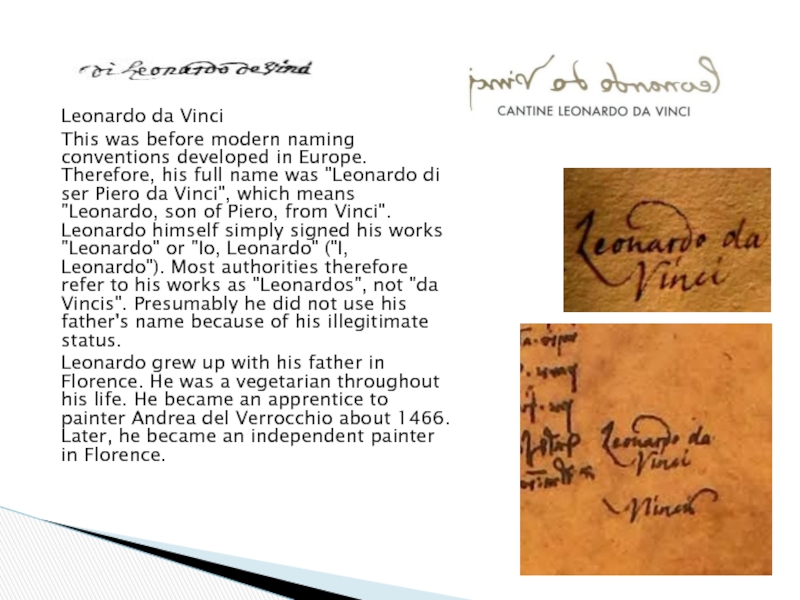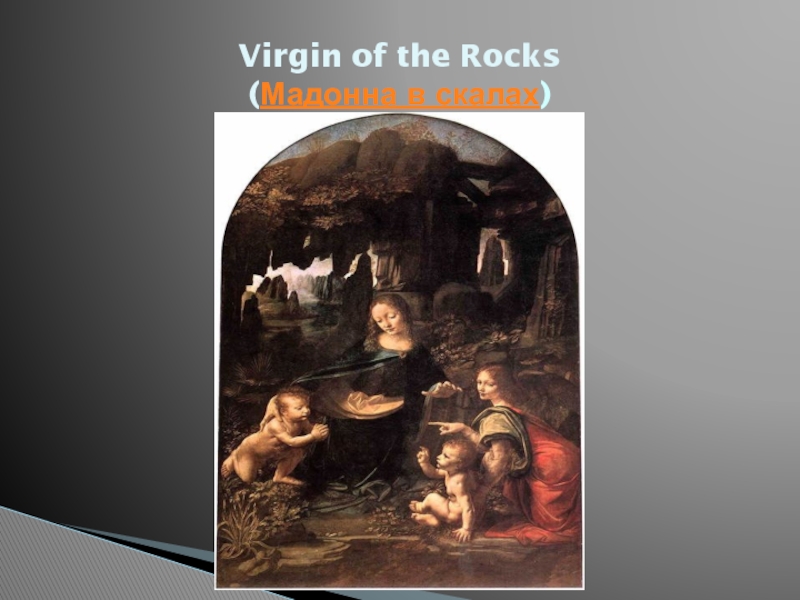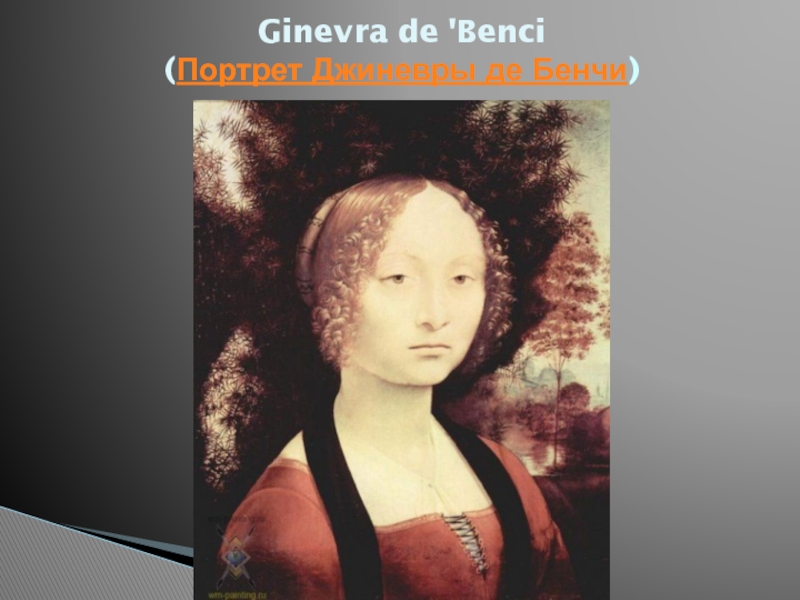was a celebrated Italian Renaissance architect, musician, inventor, engineer, sculptor
and painter.He has been described as the archetype of the "Renaissance man" and as a universal genius. Leonardo is well known for his masterly paintings, such as The Last Supper and Mona Lisa. He is also known for his many inventions that were conceived well before their time but of which few were constructed in his lifetime. In addition, he helped advance the study of anatomy, astronomy, and civil engineering. Leonardo was born in Anchiano, near Vinci, Italy. He was an illegitimate child. His father Ser Piero da Vinci was a young lawyer and his mother, Caterina, was a peasant girl. It has been suggested that Caterina was a Middle Eastern slave owned by Piero, but the evidence is scant.
BIOGRAPHY


































![Автоматизация звука [ Р ] в предложениях и связной речи](/img/tmb/7/617779/d587a459fd9c12b37a150bca9a293e56-800x.jpg)





